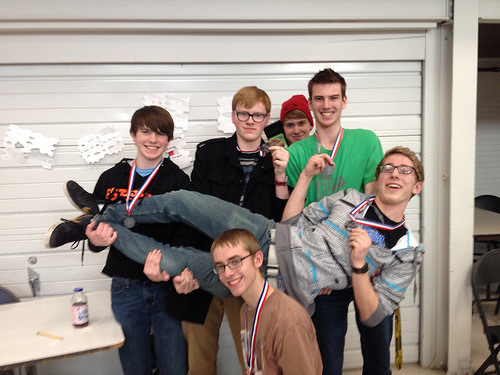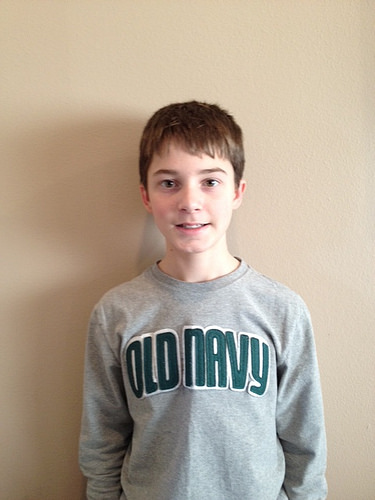by Dennis Dalman
news@thenewsleaders.com
Two Sartell-St. Stephen Knowledge Bowl teams returned home with awards from the invitational meet last week in Eden Valley-Watkins High School where 52 teams, mostly from central Minnesota, competed.
The Sartell varsity team took a second-place award in the contest. St. John’s Prep School team was first; an Albany team took third place. The Sartell team is comprised of Sam Chappell, Adam Dullinger, Curt Koopmeiners and Quinn Skoog. Gopi Ramanathan, also a member, could not be at the meet because of illness so Dawson Rogers filled in for him. Rogers, a sophomore, is a member of the junior varsity team. Dullinger, Koopmeiners and Skoog are seniors; Chappel is a junior; and Ramanathan is a sophomore.
One of the Sartell-St. Stephen junior varsity teams placed third in the meet, after first-place and second-place wins by two teams from St. John’s Prep School. The members of the Sartell team are Erik Maas, Dawson Rogers, Derek Schmidt, Adam Schroer, R.J. Sobania and Michael Volgman-Mercuri. They are all sophomores.
Another Sartell-St. Stephen junior varsity team took eighth place at the meet. Its members, all ninth-graders, are Katie Connolly, Max Hennen, Adam Johnson and Rory Spanier.
The teams’ coach is Sartell High School science teacher Luke Walker, who has coached Knowledge Bowl for three years.
“We have a really big group this year,” Walker said. “There are 37 kids in the program. We are now running seven teams.”
So far, Sartell-St. Stephen Knowledge Bowl teams have competed in three invitational meets – one in Buffalo, one in Big Lake and the last at Eden Valley-Watkins. The Big Lake meet was one of the largest in Knowledge Bowl history, comprising 97 teams in competition, Walker noted.
The contests consist of a written round that lasts about an hour, followed by oral rounds of 45 questions on a wide range of topics.
Walker said invitational meets will continue into early March. Sartell High School will itself host an invitational meet in February. In the second week of March, there will be a sub-regional meet after which up to five teams from each of the state’s regions will go on to state competition. At the state level, competition will be separated into smaller schools and larger schools.

The Sartell-St. Stephen Knowledge Bowl Varsity Team 1 took second-place honors at an invitational meet at Eden Valley-Watkins. Its members are (left to right) Dawson Rogers, Sam Chappell, Dalton Foss (score-box operator), Quinn Skoog, Adam Dullinger and Curt Koopmeiners. Rogers, who is a member of a junior varsity team, filled in for member Gopi Ramanathan, who was ill the day of the meet.

One of the junior varsity Knowledge Bowl teams took third place at the Eden Valley-Watkins invitational meet. Its members are (left to right) Derek Schmidt, Michael Volgman-Mercuri, Adam Schroer, R.J. Sobania and Erik Maas.




